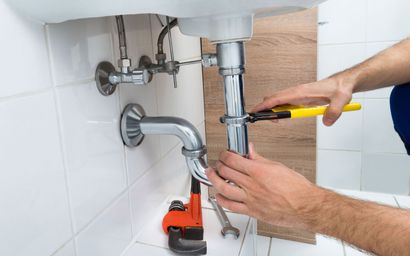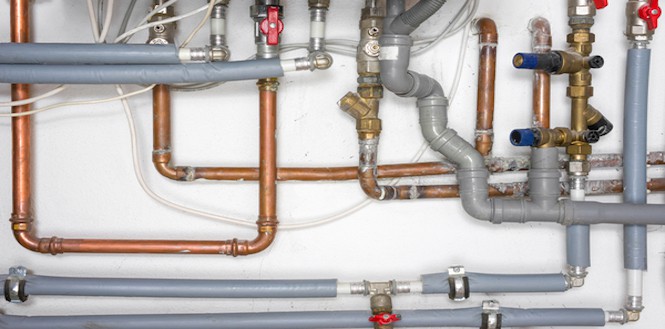Essential Parts of Your House's Plumbing System
Essential Parts of Your House's Plumbing System
Blog Article
Listed here in the next paragraphs you can get a good deal of amazing points on the subject of Anatomy of a House: Understanding the Components.

Recognizing exactly how your home's pipes system functions is essential for each home owner. From delivering tidy water for drinking, food preparation, and bathing to safely getting rid of wastewater, a well-maintained plumbing system is vital for your family's health and wellness and convenience. In this thorough guide, we'll check out the elaborate network that comprises your home's plumbing and offer ideas on upkeep, upgrades, and dealing with typical problems.
Intro
Your home's pipes system is greater than just a network of pipes; it's a complicated system that guarantees you have accessibility to clean water and reliable wastewater removal. Understanding its elements and just how they interact can help you avoid costly repair work and guarantee whatever runs smoothly.
Fundamental Elements of a Pipes System
Pipelines and Tubing
At the heart of your plumbing system are the pipes and tubes that lug water throughout your home. These can be made of various materials such as copper, PVC, or PEX, each with its advantages in terms of toughness and cost-effectiveness.
Fixtures: Sinks, Toilets, Showers, etc.
Fixtures like sinks, bathrooms, showers, and tubs are where water is utilized in your house. Recognizing just how these components connect to the pipes system aids in diagnosing problems and intending upgrades.
Shutoffs and Shut-off Factors
Shutoffs regulate the circulation of water in your plumbing system. Shut-off valves are vital throughout emergency situations or when you require to make repair services, enabling you to isolate parts of the system without interrupting water flow to the whole residence.
Water System
Key Water Line
The major water line attaches your home to the community supply of water or a personal well. It's where water enters your home and is distributed to various components.
Water Meter and Stress Regulator
The water meter measures your water usage, while a pressure regulatory authority makes sure that water moves at a safe pressure throughout your home's plumbing system, protecting against damage to pipes and fixtures.
Cold Water vs. Hot Water Lines
Recognizing the distinction between cold water lines, which provide water directly from the primary, and hot water lines, which lug warmed water from the hot water heater, assists in fixing and planning for upgrades.
Drainage System
Drain Pipes and Traps
Drain pipes bring wastewater away from sinks, showers, and commodes to the sewage system or septic system. Catches prevent drain gases from entering your home and also trap particles that can trigger blockages.
Ventilation Pipelines
Air flow pipes enable air into the drainage system, protecting against suction that might slow water drainage and trigger traps to vacant. Appropriate air flow is necessary for preserving the integrity of your pipes system.
Significance of Correct Drain
Making certain appropriate drainage stops back-ups and water damages. Routinely cleaning up drains and preserving traps can stop pricey repair services and extend the life of your plumbing system.
Water Heating Unit
Kinds Of Water Heaters
Hot water heater can be tankless or traditional tank-style. Tankless heaters warm water as needed, while storage tanks save heated water for immediate use.
Upgrading Your Pipes System
Reasons for Updating
Updating to water-efficient components or changing old pipes can improve water high quality, minimize water bills, and increase the worth of your home.
Modern Plumbing Technologies and Their Advantages
Discover modern technologies like wise leak detectors, water-saving commodes, and energy-efficient water heaters that can save cash and minimize environmental effect.
Cost Factors To Consider and ROI
Compute the upfront costs versus lasting financial savings when considering plumbing upgrades. Numerous upgrades spend for themselves via reduced energy expenses and less repair work.
Exactly How Water Heaters Connect to the Pipes System
Comprehending how hot water heater connect to both the cold water supply and hot water distribution lines helps in diagnosing problems like inadequate hot water or leaks.
Upkeep Tips for Water Heaters
Regularly flushing your water heater to remove debris, checking the temperature settings, and examining for leaks can extend its life-span and enhance energy performance.
Typical Plumbing Problems
Leaks and Their Causes
Leaks can happen due to aging pipes, loosened installations, or high water stress. Dealing with leakages promptly protects against water damages and mold and mildew growth.
Blockages and Blockages
Blockages in drains pipes and toilets are often triggered by purging non-flushable products or a build-up of oil and hair. Utilizing drain screens and bearing in mind what goes down your drains can stop obstructions.
Signs of Plumbing Troubles to Watch For
Low water pressure, slow drains, foul odors, or uncommonly high water expenses are indicators of possible plumbing problems that should be attended to immediately.
Pipes Maintenance Tips
Routine Examinations and Checks
Set up yearly pipes assessments to capture concerns early. Try to find indicators of leakages, deterioration, or mineral build-up in faucets and showerheads.
DIY Maintenance Tasks
Simple jobs like cleansing faucet aerators, looking for bathroom leakages using color tablet computers, or protecting revealed pipes in chilly environments can protect against significant pipes issues.
When to Call a Specialist Plumbing
Know when a pipes issue calls for expert proficiency. Trying complicated repairs without appropriate knowledge can result in even more damage and greater repair work expenses.
Tips for Decreasing Water Usage
Straightforward routines like fixing leakages immediately, taking shorter showers, and running full tons of laundry and meals can save water and lower your utility bills.
Eco-Friendly Pipes Options
Take into consideration lasting plumbing materials like bamboo for flooring, which is durable and eco-friendly, or recycled glass for counter tops.
Emergency situation Readiness
Actions to Take Throughout a Pipes Emergency situation
Know where your shut-off shutoffs lie and how to shut off the water in case of a burst pipe or major leakage.
Relevance of Having Emergency Situation Calls Convenient
Maintain call information for regional plumbing professionals or emergency situation services readily available for fast feedback during a plumbing situation.
Environmental Influence and Conservation
Water-Saving Components and Appliances
Setting up low-flow faucets, showerheads, and toilets can dramatically minimize water use without compromising efficiency.
Do It Yourself Emergency Situation Fixes (When Applicable).
Momentary solutions like utilizing air duct tape to patch a dripping pipe or positioning a container under a trickling tap can minimize damages until an expert plumbing professional arrives.
Conclusion.
Recognizing the anatomy of your home's pipes system empowers you to preserve it properly, saving time and money on repair services. By adhering to normal maintenance regimens and staying educated regarding modern plumbing technologies, you can ensure your pipes system operates successfully for many years ahead.
HOW YOUR PLUMBING SYSTEM WORKS
Which Pipes Do What?
Blue lines = fresh water supply entering the building Red lines = hot water supply entering the building Grey lines = pipes carrying waste away from the building and venting pipes carrying gases away from the building (through the roof) YOUR MAIN PLUMBING SYSTEMS
There are two main plumbing systems that support your home s basic plumbing needs one that brings clean water into your home, and one that sends dirty water away from your home. Connected to the toilet, bath, shower, and other faucets in your home, these two systems keep your water flowing in the right directions.
ACCESSING FRESH WATER
Fresh and clean water is brought into your home through the main water supply line . Filtered through one pipe, this water is pressured to flow into the various fixtures in your home at any given time.
This water can be sourced from a well located on your property, a pond or river (mostly cottages), or, as in most cases, from the city s municipal water treatment centre. However, it is important to note that water that is untreated, such as the water siphoned from ponds or rivers, may not be safe to drink. Personal water supplies always need to be treated for hardness and contaminants before consumed.
MUNICIPAL WATER SUPPLIES
Improve taste and odour Remove sediment Eliminate hardness Reduce chlorine COLD WATER SUPPLY VS. HOT WATER SUPPLY
Cold water flows into your home or building through the service line, which then distributes hot or cold water to your fixtures. This line is most commonly run through a central column that runs floor to floor. Hot water runs in short and straight pipes as the longer the pipeline, the more heat that will be lost in the transfer. Having shorter pipes also allows residents to access hot water more quickly.
WASTE WATER SYSTEM
Your wastewater system is divided into two parts pipes that send wastewater away from your home and venting pipes that send sewer gas away from your home. Sewage water travels through pipes that flush the water and waste towards local sewers that are operated and managed by your city or town. Most sewer systems rely on gravity to move the wastewater to where it needs to go.
The further away from your toilet or sink, the larger wastewater pipes become. This allows for waste to be disposed of from various parts of your home or business at once without pipe blockages. The angle and flow of these pipes are also essential for keeping your waste pipes clear of build up.
https://harrisplumbing.ca/how-your-home-plumbing-system-works/

Do you appreciate more info about Plumbing Installation 101: All You Need to Know? Post a short review directly below. We will be delighted to find out your thoughts about this write-up. We hope to see you back again later on. Remember to take a moment to distribute this post if you enjoyed reading it. Many thanks for your time. Kindly check up our blog back soon.
Call Today Report this page